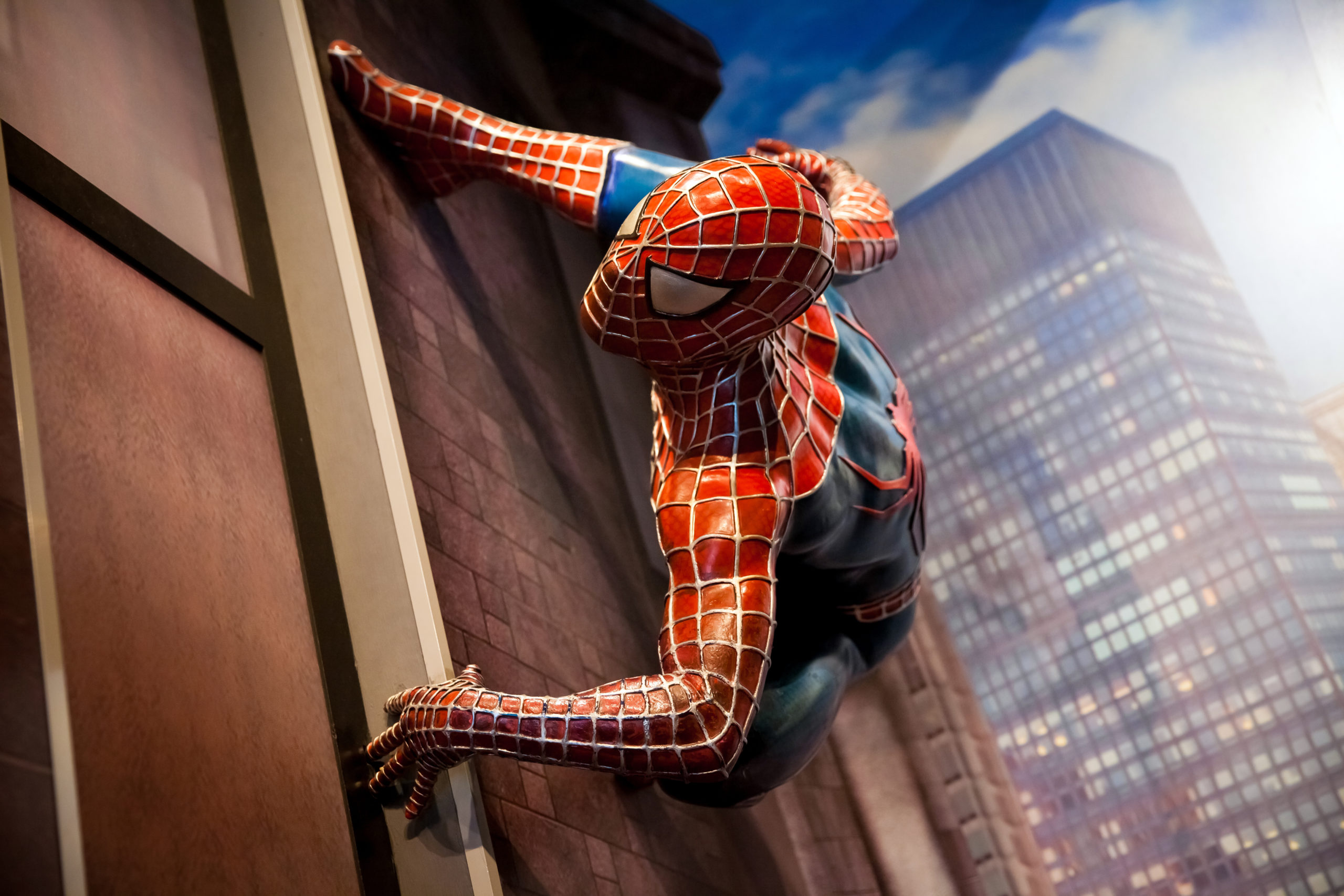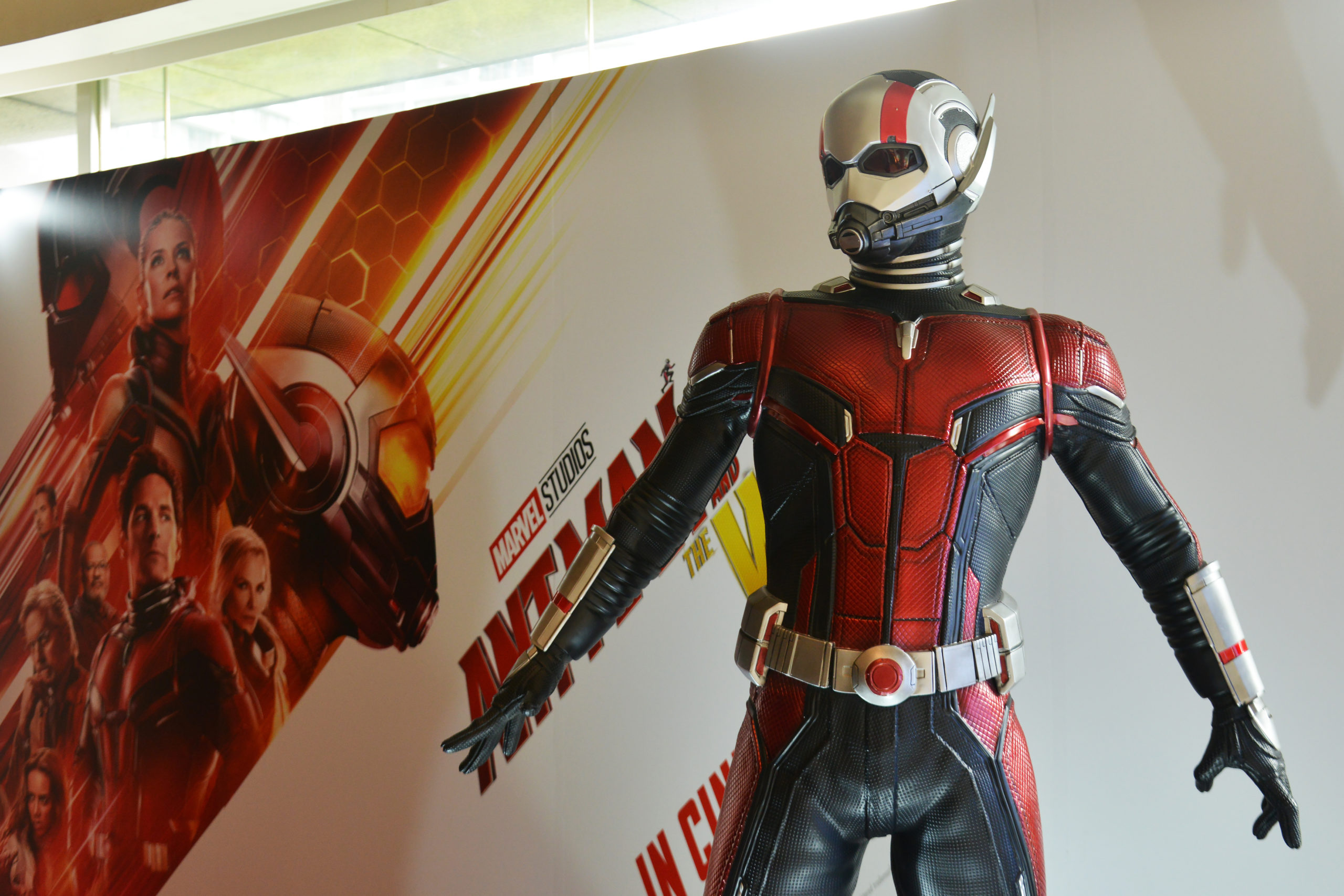Insect-Themed Superheroes
Insect-Themed Superheroes
Superhero and comic-book movies are wildly popular due to their high entertainment value, relatable and appealing characters, and fantastical superpowers that inspire audiences everywhere to open their minds to what is possible. Some superheroes, specifically in the Marvel franchise, have powers and names that relate to creatures and objects in real life. Some of the most popular heroes that have been featured in the recent blockbuster films are even named after insects and arachnids. So it is worth wondering: how do their names and powers relate to the real pests they are associated with?
Spider-Man

Arguably the most popular creature-themed superhero, Spider-Man has many unique powers that seem to mirror the abilities of most species of spiders. But are these abilities realistic for a normal spider?
-
-
-
- Web-Shooting – Part of the famous web slinger’s appeal is how he effortlessly swings through Manhattan on spider webs that he shoots from his wrist, either from a device or from his body, depending on the film series. He also frequently uses them in combat by shooting webs directly into a villain’s face or by tying them down to a car or the ground. True to the hero, a normal spider’s thread is also very strong for its size. Spider silk is stronger than most manmade connectors, and may be the toughest natural material out there. But the main difference between the transportation methods of Spider-Man and a spider is that spiders cannot swing from web to web like he can. A regular spider can follow the wind and blow to another location, but they cannot shoot webs and gradually swing across town like the hero.
-
-
-
-
-
- Wall-Climbing – Spider-Man is able to be a great spy in addition to a crime-fighting action hero, thanks to his ability to climb up walls and stick to the ceiling. It is implied that he is naturally able to do this because of the spider-like abilities he was given, not because of his suit. If you have ever experienced the horror of looking up to see a dark moving spot on your wall or ceiling, you know that real spiders also have this skill. Spiders have microscopic hairs within their already small hairs that can make a bond between itself and the molecules of a rough surface. This strong bond allows the spider to walk around basically wherever it pleases, besides on a very smooth surface like a TV screen.
-
-
-
-
-
- Super Strength – The strength of Spider-Man is many times his own weight, which is part of what allows him to swing across town and throw large objects at his enemies. He is even catches cars thrown at him, and has been known to stop a moving train and hold two halves of a ship together (for a little while, at least). While spiders can lift objects larger and heavier than they are, it is not considered super by any means. Since a spider is so light, it doesn’t take much to be heavier than its weight. One sign of true strength lies with jumping spiders that can cover a massive amount of space compared to its size. They have a muscle that shoots a fluid from their body down through the legs, which causes the spider to jump lengths as much as fifty times its own size. Spiders may not be able to stop a moving bus, but they can lift the prey they catch in their webs, and that is enough for them.
-
-
-
-
-
- Spidey Sense – One of Spider-Man’s most useful powers is his ability to sense danger, even if he has yet to discover the true source of it. This tingly feeling in his head tells him to be on the highest alert and be prepared to fight. Conversely, normal spiders cannot sense any future danger or have a specific sense for danger, but they do have the ability to be more aware of their surroundings. They have small hairs all over their bodies that can feel vibrations in the air and alert them to an incoming predator or prey, depending on the frequency of the sound. Since smaller insects produce a high frequency, spiders can detect when their next meal is approaching. They can also smell by feeling a creature or objects with the sensory organs on their legs. So while spiders cannot sense the presence of an enemy just with their mind, they are quite in tune with their surroundings and are rarely taken by surprise if they are undistracted.
-
-
Black Widow

Just like how a black widow is a special type of spider, Black Widow is a specialized superhero who has a lifetime of training as a master spy. She is famous in this fictional universe for constantly being one step ahead of even the most formidable foes, but let’s see if her capabilities align with those of the famous arachnid.
-
-
-
- Spy Abilities – Black Widow wears many hats when she is on a mission; she is versed in all kinds of technology, an expert in espionage, and fluent in multiple languages. She can blend into just about every environment and work in the shadows to get what she needs. Black widow spiders are also experts at hiding, even if their bright red hourglass prevents them from being completely unnoticed. In order to prepare their prey to be eaten, the spider bites the trapped creature to paralyze it, inserts digestive enzymes, and then carries it a little ways away to eat in peace. The black widow lets its web do the hard work of capturing the prey, similar to how Black Widow sets literal or figurative traps for her “prey” to fall into.
-
-
-
-
-
- Agility – Due to her background in ballet and gymnastics, Black Widow is quite agile and flexible, often striking her famous pose of a somewhat side lunge with one arm posed behind her after she sticks a landing and is on the lookout for more enemies. Interestingly enough, black widows also move their limbs when they are sensing or attacking prey. The slit sensilla look like small cracks that cover the black widow’s whole exoskeleton, and is used to sense vibrations and frequencies when those pass though the cracks to the cells. They will move into a crouching position with all of their legs tucked under their body when they want to sense high frequencies emitted by potential prey. Small insects put off a higher frequency than the wind, so black widows need to stay low in order to sense them.
-
-
-
-
-
- Combat – Black Widow was trained from childhood to be a skilled assassin, making her a dangerous enemy to anyone who dares cross her. While her combat skills are enough to make her a powerful agent, she also has weapons that seem to mirror a black widow’s bite. She even has bracelets called the Black Widow’s Bite that shoot electricity at her target, temporarily disabling them in waves of pain. Similarly, black widows are very dangerous for anyone who gets near, even humans. Their bite is famous for inflicting excruciating pain on most humans, and almost immediately killing insects. Symptoms of a black widow bite include muscle spasms, cramps, hallucinations, and an overall pressurizing pain that works its way through the body. If you believe you have been bitten by a black widow, seek medical attention immediately.
-
-
-
-
-
- “Betrayal” of Men – Perhaps the most well-known perception of black widows is that they eat their mates after the mating is over. Black Widow does not have a specific mate in the movies, but she definitely “betrays” men who are not on her side but still trust her. She is an expert in going undercover, as discussed earlier, and especially in appearing as a damsel in distress in order to get what she wants before she strikes any enemy who made the mistake of helping her. But the stereotype of the spider is actually a myth – mostly. Certain species will kill and eat their mate every time, but most instances of romantic spider cannibalism is simply because the male entered the web without warning and met a hungry female. Black Widow’s “specialty” is born out of a mostly false stereotype of the spider, but at least she uses her power for good.
-
-
Ant-Man

True to his name, Ant-Man can shrink down to the size of an ant and run amongst the colony, thanks to his specialized suit that runs on a fictional energy called Pym Particles. He can also grow to be dozens of feet tall, but real ants obviously (thankfully) cannot do that. But like Ant-Man, ants have quite a few useful powers of their own.
-
-
-
- Colony Leader – Ant-Man does not have the ability to lay eggs or do the normal acts that a queen does, but he definitely takes on the leadership role of Hank Pym’s specialized ant forces. By using his cybernetic helmet, Ant-Man can communicate with his army to tell them where to go and what to do. Ants in real life have their own wordless communication that allows the colony to work as one. Ant colonies consist of countless members who work hard for the good of the colony and, ultimately, the queen. Ants communicate through their antennae and pheromones that are released as a warning or a guide. Since they literally need each other to survive, the fact that an army of ants is at Ant-Man’s constant disposal is not the most outlandish part of his story.
-
-
-
-
-
- Strength – Even when he is shrunken down to the size of an ant, Ant-Man is able to lift and throw objects much larger than his own weight. This is a very useful and lethal ability, especially when the enemies can’t see it coming due to his minuscule size. There are also small discs that he can throw at an object to make it giant or tiny, depending on the type of disc he uses. Ants are also known to lift objects incredibly larger than themselves, and it has been found that they can actually lift up to 5,000 times their body weight. Their bodies have small structures on them that cause the exoskeleton and tissue to put less stress on each other, which allows them to lift so much without straining their small bodies. And since ants often operate as one force and work together to lift one large object, they are unstoppable in terms of just how much they can lift.
-
-
-
-
-
- Expert Thief – Ant-Man is an expert at cat burglary and is able to break into the most impenetrable forces thanks to his ingenuity and Master’s degree in engineering. Combined with his suit’s ability to shrink him down, there seems to be nothing that Ant-Man can’t steal. The only kind of stealing that real ants do is the stealing of people’s food from their kitchens and picnics. Since the colony works as one, it is not likely that ants will steal materials from each other within their colony. Any food that is gathered is shared amongst the group and offered to the queen since she is the sole reproducer. Interestingly, there is a species of ant actually called the Thief Ant that is known to steal eggs and food from nearby ant colonies. But this seems to be the only type of ant that shares Ant-Man’s specialization in stealing.
-
-
Pest Control Technicians are True Superheroes
These heroes are great characters and are part of some fun and exciting action sequences, but that doesn’t mean your home has to house their namesake insects and arachnids. These common pests are all easily handled by pest control, so it is worth giving them a call if your home suddenly becomes headquarters for the newest pest superhero squad.
Citations
Ant-Man: In comics full report. (n.d.). Marvel. Retrieved February 25, 2022, from https://www.marvel.com/characters/ant-man-scott-lang/in-comics
Black Widow: On screen full report. (n.d.). Marvel. Retrieved February 25, 2022, from https://www.marvel.com/characters/black-widow-natasha-romanoff/on-screen
Di Silvestro, R. (2020, January 24). Spider-Man vs the real deal: Spider powers. National Wildlife Federation Blog. Available at https://blog.nwf.org/2012/06/spiderman-vs-the-real-deal-spider-powers/ (Accessed on February 25, 2022).
Kelly, S. (2021, December 14). No way home: An arachnologist critiques Spider-Man’s powers. Science Focus. Available at https://www.sciencefocus.com/nature/spider-man-powers/ (Accessed on February 25, 2022).
McLendon, R. (2018, August 28). 13 amazing antics of ants. Treehugger. Available at https://www.treehugger.com/amazing-antics-ants-4868541 (Accessed February 25, 2022).
Spider-Man: On screen full report. (n.d.). Marvel. Retrieved February 25, 2022, from https://www.marvel.com/characters/spider-man-peter-parker/on-screen
Yong, E. (2019, January 9). The world shifts when a black widow squats. The Atlantic. Available at https://www.theatlantic.com/science/archive/2019/01/entire-black-widow-spider-sensor/579814/ (Accessed on February 25, 2022).
***Disclaimer: Section 107 of the United States Copyright Act recognizes “fair use” copywriter content as such: “Notwithstanding the provisions of sections 106 and 106A, the fair use of a copyrighted work, including such use by reproduction in copies or phono-records or by any other means specified by that section, for proposes such as criticism, comment, news reporting, teaching, scholarship, or research, is not an infringement of copyright.” This blog post may contain certain copyrighted works and characters that were not specifically authorized to be used by the copyrighted holder(s), however, the content on this post qualifies as “commentary” on the copyrighted works under the “fair use” doctrine of the U.S. Copyright Act and is thereby protected by federal law. Furthermore, we do not claim any ownership or creative rights of any characters on this list, and all rights outside of the fair use doctrine belong to the respective owner(s).

